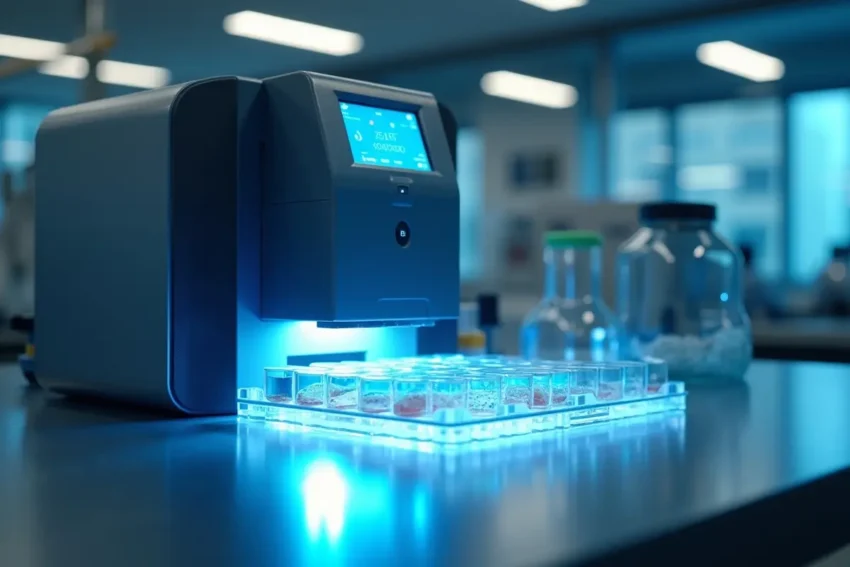Why Microplate Luminometers Are Vital for Light Detection Studies

Microplate luminometers play a crucial role in laboratories focused on bioluminescence and other light detection methods relevant to various research fields. The increasing demand for precise and accurate measurements in biological and chemical research has made luminometers one of the pivotal tools for scientists.
These devices help streamline experiments by providing quick results, reducing error, and improving efficiency. Light detection studies have numerous applications, ranging from drug discovery and environmental monitoring to molecular biology. This article explores the importance of microplate luminometers in scientific research, their working principles, and the advancements in technology that have enhanced their capabilities.
Contents
Understanding Microplate Luminometers
Microplate luminometers are sophisticated instruments designed to measure luminescence produced by chemical reactions or biological activity. They analyze light emissions that occur in various assays, particularly those based on luciferase enzymes, which emit light upon the conversion of substrate into product.
These studies are fundamental, particularly in fields like pharmacology, where understanding cellular responses to drugs is crucial. By offering a sensitive method of light detection, microplate luminometers enable researchers to obtain quantitative measurements with high precision. The growing reliance on these instruments underscores their importance in laboratories worldwide, where accurate data is paramount.
Applications in Drug Discovery
One of the primary applications of microplate luminometers lies in drug discovery processes. High-throughput screening (HTS) enables researchers to evaluate thousands of chemical compounds for biological activity rapidly. With the ability to provide real-time feedback on cellular responses, these luminometers help identify promising candidates for therapeutic agents.
By employing assays such as TaqMan or HTRF, researchers can gain insight into cellular pathways, receptor interactions, and metabolic activities. The efficiency of the BMG Labtech HTRF plate reader is noteworthy in this field, as it enables the simultaneous analysis of multiple samples, thereby saving time and resources.
These advancements empower researchers to accelerate their discovery timelines significantly and promote a deeper understanding of drug mechanisms.
The Role of Microplate Luminometers in Environmental Science
Environmental monitoring represents another vital application area for microplate luminometers. These instruments aid in assessing contamination levels in various environmental samples, including water, soil, and air. By measuring bioluminescent responses from microbial communities exposed to pollutants, researchers can evaluate the impact of contaminants on ecosystems.
The assessment of microbial respiration offers insights into the toxicity of various substances. This crucial information helps scientists understand ecological health and contributes to regulatory compliance and the development of cleaner technologies.
Microplate luminometers facilitate such studies by providing high-throughput capabilities, enabling extensive sampling and rapid analysis for monitoring environmental changes effectively.
Advanced Features Enhancing Performance
Recent technological advancements in luminometer design have resulted in enhanced performance and versatility. Modern microplate luminometers include features like automated injection systems, which attach reagents seamlessly, increase throughput, and improve reproducibility.
Enhanced optics and detection systems allow for more sensitive measurements, enabling the detection of lower levels of luminescence. Integration with software platforms facilitates data management and analysis, allowing researchers to visualize their results efficiently.
Such advanced functionalities ensure that microplate luminometers remain indispensable in both academic and commercial research settings, delivering reliable data while accommodating expanding scientific demands.
Choosing the Right Microplate Luminometer
Deciding on the appropriate microplate luminometer depends on various factors, including the specific requirements of the experiments, budget constraints, and future scalability needs. Researchers should consider the sensitivity levels, dynamic range, and assay compatibility of selected devices.
It’s also important to evaluate the integration capabilities with existing lab technologies and the support provided by manufacturers. By aligning the selection of luminometers with research goals, laboratories can maximize investment and enhance experimental outcomes.
Training and User Proficiency
Even with advanced features, the effectiveness of a microplate luminometer largely depends on the proficiency of the users operating it. Proper training ensures that researchers can take full advantage of the instrument’s capabilities, from calibration to data interpretation.
Workshops, vendor training sessions, and in-lab practice all contribute to reducing user error and increasing consistency across experiments. A well-trained team maximizes the performance of the device and extends its lifespan through proper handling and maintenance. By prioritizing user education, laboratories can achieve more reliable results and a greater return on investment.
Microplate luminometers have established themselves as indispensable tools in light detection studies, offering unparalleled accuracy, efficiency, and adaptability. Their applications span drug discovery, molecular biology, and environmental science, underscoring their versatility in addressing critical research questions.
With continual technological advancements and careful consideration in selecting the right equipment, laboratories can harness these instruments to accelerate innovation and improve outcomes. Ensuring proper training and adoption of best practices enhances the reliability of results.
As research demands grow, microplate luminometers will remain central to scientific discovery, enabling breakthroughs that impact medicine, environmental health, and beyond.



